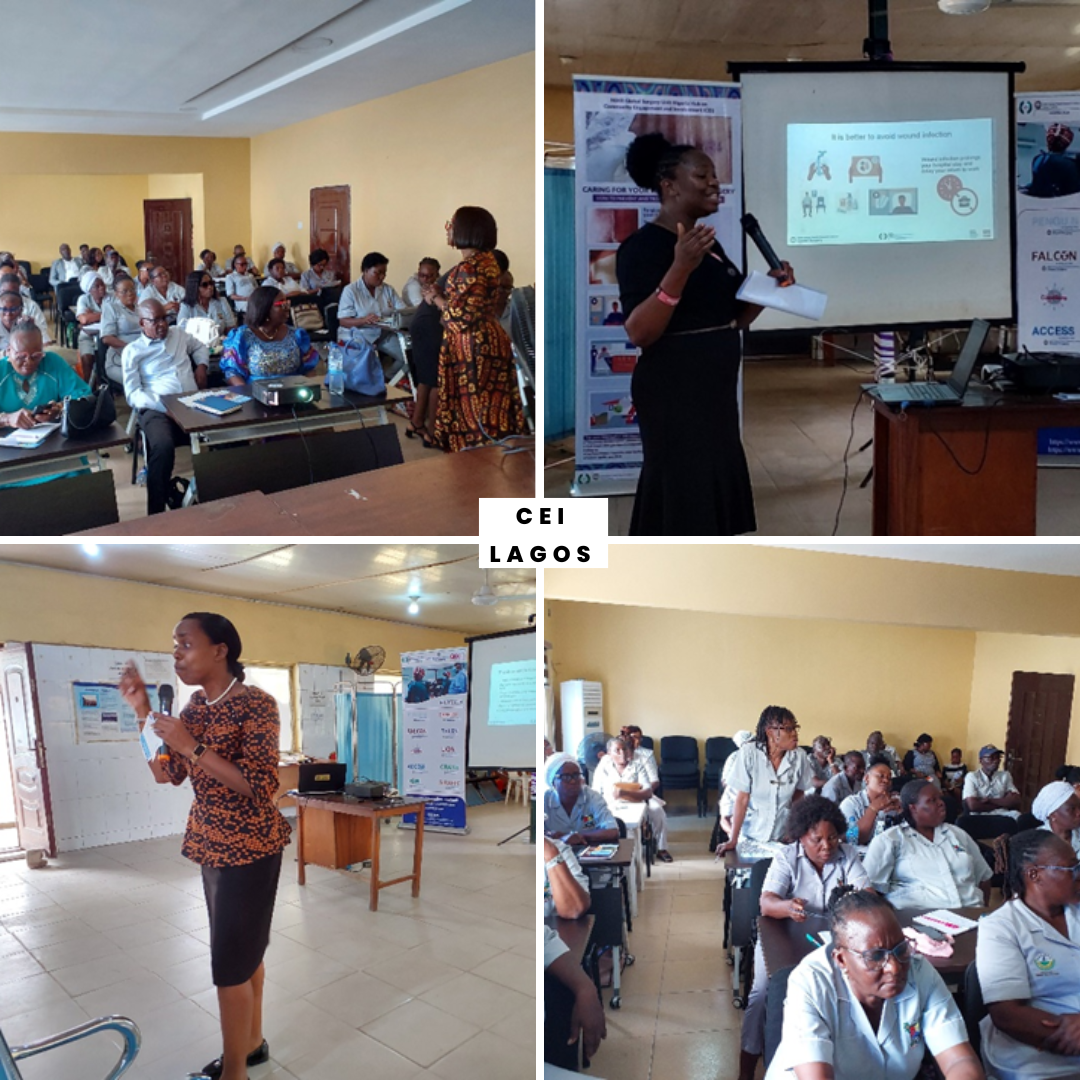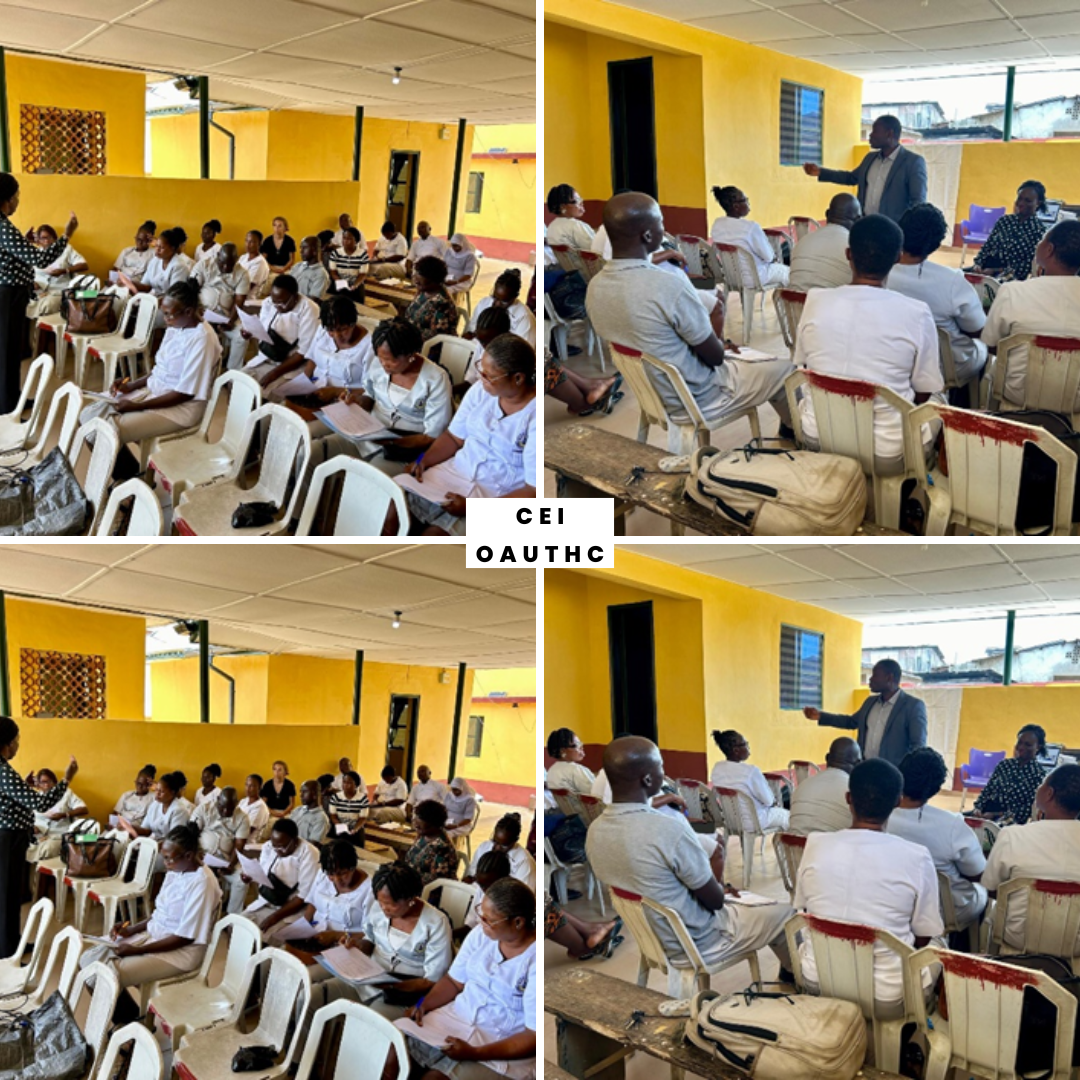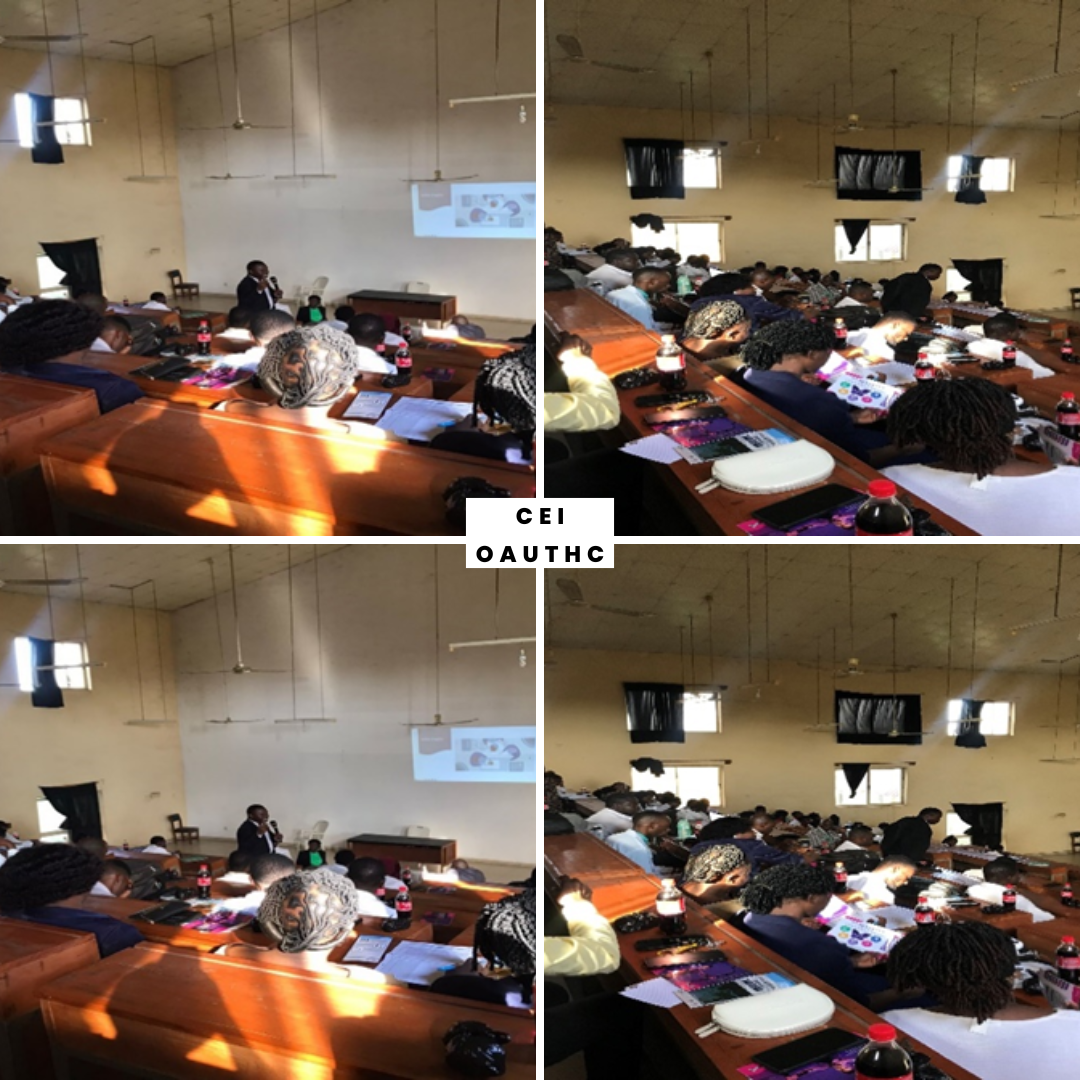
In recent years, the importance of community engagement and involvement in healthcare has become increasingly evident, as it plays a crucial role in improving health outcomes, fostering trust, and promoting active participation in health initiatives. Surgical care is an essential component of public health and must be embedded in community engagement initiatives with the goal of improving access and outcomes. The Community Engagement and Involvement (CEI) team of the Nigeria Hub is at the forefront of integrating community-based approaches to healthcare delivery. Their collective goal is to ensure active community participation in enhancing surgical care, thereby contributing to strengthening the overall health system
Surgical site infection (SSIs) remains one of the most common and serious complications following surgery, leading to prolonged hospital stays, increased healthcare costs, and, in some cases, long-term health issues for patients. Preventing SSIs is critical not only to improving patient outcomes but also to the optimal use of healthcare resources. In Nigeria, the CEI teams across three Spokes which include practitioners at Lagos University Teaching Hospital (LUTH), Lagos State University Teaching Hospital (LASUTH), and Obafemi Awolowo University Teaching Hospitals Complex (OAUTHC) in Ile-Ife, have been focusing on implementing robust community engagement strategies to reduce the incidence of SSIs across both urban and rural hospitals.
This article explores how health practitioners in these regions are integrating community engagement and involvement in their efforts to prevent SSIs, highlighting the innovative approaches and partnerships being used to enhance infection control practices and improve patient outcomes through “Project REACH (REsources for surgical cAre training of Community Health workers)” aims to implement and disseminate Patient Education Toolkit through CHW training in Nigeria..
Community Health Workers
Community Health Workers (CHWs) play a major role in the health sector. They are professional healthcare providers who have received a formal level of education from a reputable College of Health Sciences. They have a governing board which is the “Primary Health Care Board”. There are different types of CHWs, each receiving varying levels of training. Community health extension workers (CHEWs) receive two to three years of “health-related training as well as competency-based training” which gives them the skills to provide basic primary care as recognized by Nigeria’s national policy Other CHW types receive training focused on improving primary health care delivery in Nigeria This includes training on: “environmental sanitation”, “immunization”, “health education and community mobilization”, “treatment of minor ailments”, “water and sanitation”, “nutrition and growth monitoring” and “essential drug supply” CHWs’ contribution to healthcare, particularly within low and middle-income countries (LMICs), has been globally recognized.Role of Community Health Workers in Nigeria
Community Engagement in SSI Prevention: Key Strategies
Health practitioners in Lagos and at OAUTHC, Ile-Ife, have been proactively working to promote community involvement in the prevention of surgical site infections (SSIs). These initiatives focus on raising awareness, changing behaviors, and encouraging collaboration across all levels of healthcare. As part of these efforts, the Nigeria CEI team developed comprehensive patients educational toolkits and posters designed to educate patients on proper post-surgical wound care. These resources aim to empower patients with the knowledge and practices needed for SSI prevention and management. To gain access to the community, the team had a robust interaction with and obtained approval from governmental regulatory body, aligned with the governmental healthcare goals, and engaged the community gatekeepers.Education and Awareness Programs
The CEI teams at LUTH, LASUTH in Lagos, and OAUTHC in Ile-Ife have placed a strong emphasis on educating healthcare workers at all levels—from tertiary to primary health care—on the importance of hygiene, the role of prophylactic antibiotics, and proper wound care techniques in preventing SSIs. The participants were engaged on the use of the toolkits to educate patients in the community and in the hospitals•In Lagos, a total of 103 participants were trained across various primary healthcare centers and CHP leadership. The training focused on educating community health practitioners (CHPs) on proper wound care, identifying signs of infection, and emphasizing the importance of adhering to medical instructions. These CHPs play a vital role in supporting SSI prevention by visiting patients' homes, providing health education, and ensuring proper post-surgery care. They also act as intermediaries between healthcare providers and patients, ensuring continuous care and reinforcing infection prevention messages within the community.

In Ile-Ife, 146 participants were trained, including 78 from OAUTHC comprising of surgical teams, nurses, and other healthcare staff, 36 healthcare workers at secondary care facilities, and 31 at primary healthcare centers. Similar community health education programs were delivered in local languages, particularly in rural and semi-urban areas. Local health workers collaborate with village heads and traditional leaders to disseminate key messages on preventing infections, promoting cleanliness, and highlighting the importance of postoperative care.

Lagos and at OAUTHC, the CEI team utilized animated SSI prevention videos produced by the National Institute of Health and Care Research Global Surgery Unit (NIHR GSU) and translated to local languages to help improve understanding of SSI prevention. These videos were shared with healthcare practitioners and patients to reinforce key messages in an engaging, accessible format.

Feedback from Participants
Pre-test Feedback: The participants expressed little level of understanding and awareness about proper wound care practices, such as recognizing signs of infection, or when to seek medical help at the hospital.Post-test Feedback: There was Increased confidence and knowledge after the tests, with participants identifying techniques for wound care and early alerts about surgical site infection as well as improvement in their confidence level when caring for a surgical wound.
The training had an overall positive impact and influence on the participants, it helped to refresh their memory, reinforce what they already know, and exposed them to new trends in the care of surgical patients in the community.
Implementation of Training by Community Health Workers
Following the training sessions, participants were provided with educational materials, such as slides, posters, and pamphlets, to support implementation of appropriate wound care in patients. Community Health Workers have started to apply the knowledge gained during the training in their daily interactions with patients. Posters are prominently displayed in clinics to educate and guide patients, ensuring the information is accessible and impactful. Additionally, they have also started to train their colleagues reinforcing the training's objectives and promoting better health outcomes.These strategies are clear, reproducible and contextually adaptable and are now being replicated by CEI teams across the Spokes in the Nigeria Hub.





